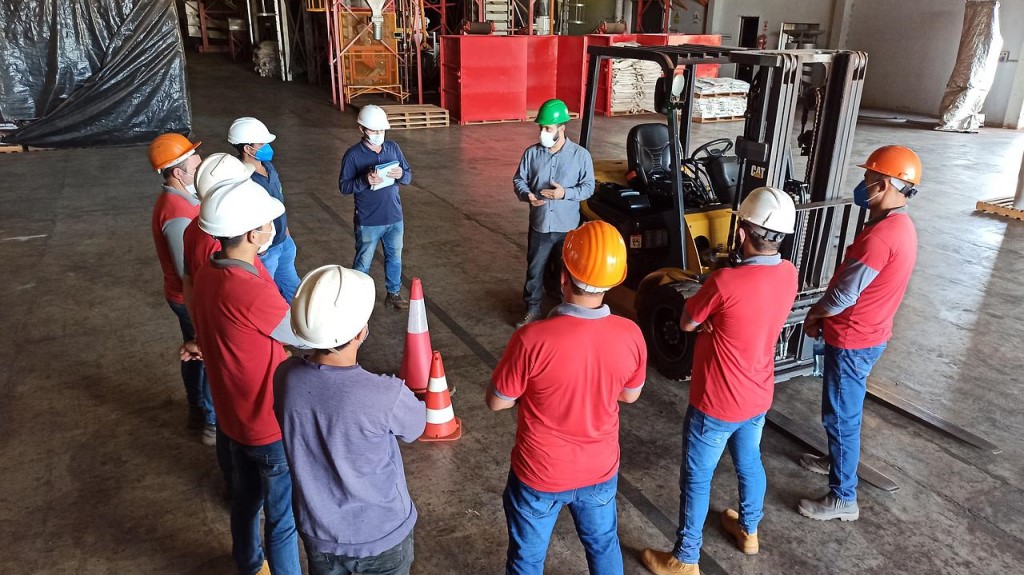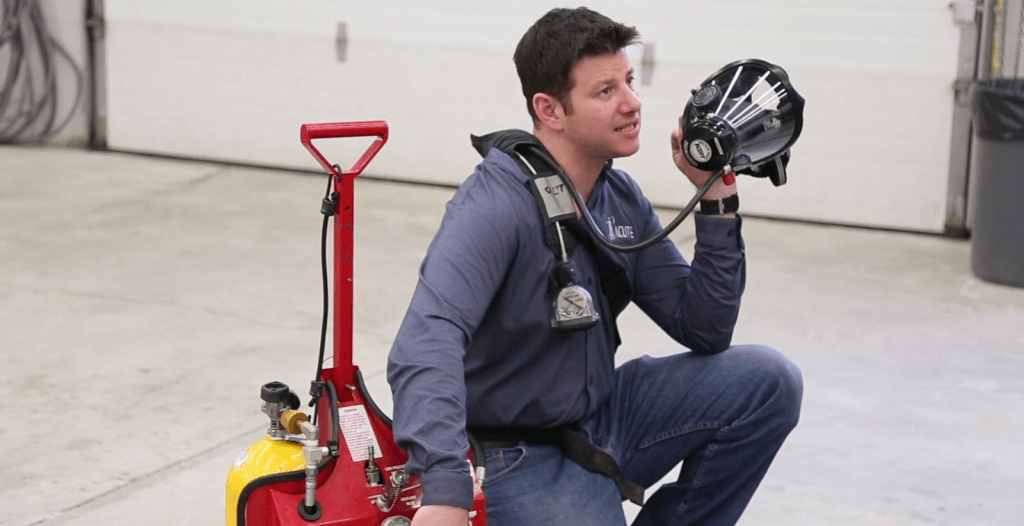The Ontario Health and Safety Act is the primary legislation that deals with health and safety requirements in workplaces in Ontario. Click on each section to learn more.
Please note: This guide does not replace the Occupational Health and Safety Act (OHSA) and its regulations, and should not be used as or considered legal advice.
- What Is the Ontario Health and Safety Act?
- The History of the Ontario Health and Safety Act
- Who Does the Ontario Health and Safety Act apply to?
- What Are the Main Rights of Workers Under the Act?
- Employer Responsibilities Under the OHSA
- What Does a Joint Health and Safety Committee Do?
- How ACUTE Can Help
Contact us if you are looking for proper health and safety training that meets OHSA standards.
1. What Is the Ontario Health and Safety Act?

The Ontario Health and Safety Act is called the Occupational Health and Safety Act, R.S.O. 1990, c. O.1 (OHSA). Its purpose is to give both employers and workers a legal framework that “sets out the rights and duties of all parties in the workplace“.
It includes important information about key aspects of health and safety in the workplace, such as:
- The duties of employers, supervisors, and employees
- Information on violence and harassment in the workplace
- Information and instructions regarding toxic substances
- Codes of practice
- Right for workers to refuse or stop work where health or safety is a concern
- Enforcement policies
- Offences and penalties
- Other regulations
To read the complete Act, click here.
2. The History of the Ontario Health and Safety Act

The Ontario Health and Safety Act came into effect in 1979. It has undergone a number of changes since its inception, designed to strengthen health and safety practices in Ontario workplaces. Some of these changes have increased the internal responsibility system (IRS). This means that workplaces are encouraged to take charge of making their environments safer by using joint health and safety committees.
Even though the OHSA gives the greatest responsibility for health and safety in the workplace to employers, it also outlines in detail the roles that each party has to play as well.
3. Who Does the Ontario Health and Safety Act Apply To?

The Occupational Health and Safety Act applies to almost all workplaces, employers, supervisors, and employees in Ontario. There are a few workplaces that are not covered by the OHSA. These include:
- Work performed by owners, occupants, or servants of the owner or occupants in a private residence or in lands used in conjunction with a private residence.
- Workplaces that fall under federal jurisdiction, such as post offices, banks, telecommunication companies, etc. These workplaces are governed by the Canada Labour Code.
- Farms run by a self-employed person with no workers (i.e. a family farm run by a couple with no other workers).
Note: Some specific areas of the OHSA apply to self-employed individuals with necessary modifications, such as:
- Regulations relating to employer duties
- Regulations about hazardous materials
- Notification and enforcement guidelines
If you are not sure whether the Ontario Health and Safety Act applies to you, then it is a good idea to contact the Ministry of Labour, Immigration, Training and Skills Development’s health and safety information line:
Toll-Free: 1-877-202-0008
TTY: 1-855-653-9260
Fax: 905-577-1316
You can get your questions answered 8:30 a.m. – 5:00 p.m., Monday – Friday.
4. What Are the Main Rights of Workers Under the Act?

There are 3 main rights set out by the Ontario Health and Safety Act. They include:
Know about potential hazards:
Under the OHSA, you have the right to know about any potential hazards associated with your workplace. Your employer must inform and instruct you about work hazards and provide the proper training and information that you need to stay safe on the job. They also need to provide you with proper supervision.
Be able to refuse unsafe work:
The Act also gives you the right to refuse to do any work that could put you or someone else in a dangerous situation that puts your health and safety at risk. In some instances, certified members of a joint health and safety committee have the right to stop any work that could pose a threat to any worker.
Have a voice:
The Ontario Health and Safety Act also gives you the right to have your voice heard about workplace health and safety issues. You can exercise your right by talking to a worker member or representative of your joint health and safety committee.
5. Employer Responsibilities Under the OHSA

Under the OHSA, employers have a wide range of legal duties. Here are just a few:
- Employers must instruct, inform, and supervise their workers to protect their health and safety.
- Employers must assist in a medical emergency. This could include providing information such as confidential business information to a qualified medical practitioner to help in a diagnosis or treatment.
- Employers need to appoint competent supervisors. These individuals must be qualified by having the knowledge, training and experience needed to organize the work that they are supervising. They also need to be familiar with the OSHA regulations and be knowledgeable about any potential health and safety dangers in the workplace.
- Employers also need to assist the joint health and safety committees to carry out their responsibilities.
- Employers must do everything they can in the circumstances to protect their workers.
To see a complete list of employer responsibilities, click here.
6. What Does a Joint Health and Safety Committee Do?

A Joint Health and Safety Committee is made up of both workers and representatives from employers. The members need to be mutually committed to making improvements to the health and safety conditions in your workplace. Together, they identify potential health and safety issues in the workplace and bring those issues to the attention of the employer.
The main responsibilities of a joint health and safety committee include:
- Perform regular inspections of your workplace (at least once a month).
- Identifying potential and actual workplace hazards.
- Get information from your employer that relates to health and safety in your workplace.
- Recommending health and safety improvements in your workplace.
- Being consulted about any health and safety-related testing in your workplace.
- Have a member representing workers present at the beginning of any health and safety-related testing in your workplace.
7. How ACUTE Can Help

The Ontario Health and Safety Act is quite complex and can be a bit overwhelming. The experts at ACUTE can help you and your workers stay safe and comply with the Act by providing you with the proper health and safety training you need.
ACUTE also provides consulting services. Our staff can travel to your worksite and provide you with diligent and confidential assessments of your needs. We will provide you with the help you need to bring you into compliance and assist you in meeting (and exceeding) the OHSA regulatory requirements.
Stay Safe at Work With ACUTE!
Hands-on, practical training is the best way to keep employers and workers safe in the workplace! ACUTE is dedicated to workplace safety and understands the importance of course and training provider approval. Why get workplace safety training with ACUTE? Here are just some of the benefits of working with ACUTE.
- Open Door Instructor-Student Partnership – ACUTE’s training services emphasize client participation. Staff foster relationships with clients and serve as a touchstone for advice anytime moving forward.
- Serving Your Team and Industry – With a vast array of clients in manufacturing, construction, health, academic, and government sectors, ACUTE brings the best safety practices from across the spectrum to your workplace.
- 100 Years Combined Experience – ACUTE provides comprehensive health and safety training, on-site safety services, and consulting services. With over 100 years of combined experience, our company staff offers more than theoretical or abstract ideas. ACUTE offers solutions.
- Track Record of Success – ACUTE has rated 4.9/5 stars on Google reviews, demonstrating a commitment to our clients, quality, and passion for training.

Hours of Operation
Monday – Friday: 8:00am-5:00pm
Saturday – Sunday: Closed
Phone: 519-747-5075
Email: info@acuteservices.com


